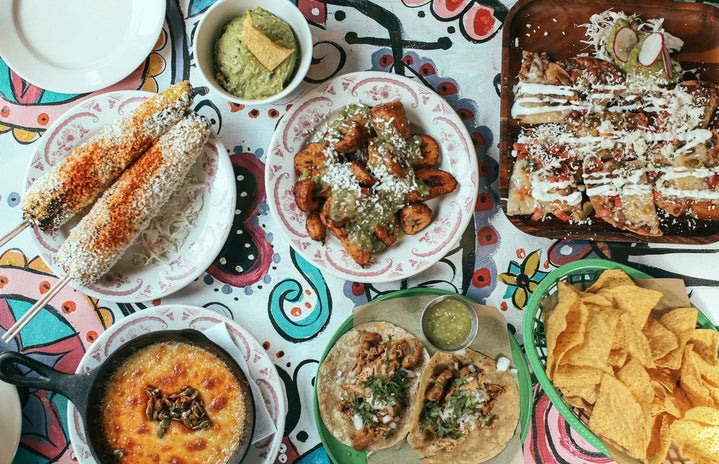France – Snails
Is a trip to Paris complete without tasting their strange delicacy, escargot? Escargot is ingrained in French culture and the French celebrate National Escargot Day on the 24th of May. Snail farming is widely known as heliciculture, although snails were eaten in France long before the practice of heliciculture became normalised. According to Journey to France, the use of the word “escargot”, to mean edible snail, was first recorded in English in 1892. The snail meat is often served in the shell. They are often cooked in garlic butter, stock and wine. When I first tasted snails in Paris, I was shocked by how tasty they were. The texture is similar to chicken, albeit a little slimier. Escargot should be on your food bucket list if you find yourself holidaying in France.
Poland – Pierogi
If you happen to find yourself on a city break in Krakow, Warsaw or Poznan you will find Polish Pierogi dotted through many menus across the cities. Pierogi are similar to dumplings, made of flour, eggs and water with a variety of sweet and savoury fillings. When I visited Krakow in 2020, I decided to try sweet pierogi filled with blueberries and served along with sweetened yoghurt. The sweet nature of these pierogi tasted like summer and have been a food that I’ve craved and often thought about since I left Krakow two years ago. Alternatively, savoury pierogi are typically filled with cheese, potatoes, sauerkraut and different types of meat.
Scotland – Haggis
Although Scotland’s national dish would not be considered aesthetically pleasing, it is definitely tasty. It’s a right of passage when visiting Scotland to try this dish at least once. When you google the ingredients in Haggis, your stomach may do a tumble (or two), but all of this aside its unique texture and flavours will surprise you. The dish consists of sheep offal, the internal organs of a sheep such as the liver, heart and lungs. Haggis is seasoned with suet, oatmeal, onions, cayenne pepper and a range of spices. Suet is the hard fat of the animal that surrounds the loins and kidneys. It can be found across Scotland in supermarkets, bars and restaurants. It is commonly served with neeps and tatties, mashed turnip and mashed potatoes. If you find yourself walking through the streets of Scotland on a cold, wintery day, take yourself to a traditional Scottish bar and order the delicacy. It will be sure to warm you up. It is comparable to the feeling that you get when you eat an Irish stew in the height of winter, pure warmth and contentment. Haggis was banned in the U.S in 1971 due to a ban on food containing sheep lungs, which comprises approximately 15% of the recipe.
Brazil – Guava Cake Roll
In 2019, I was lucky enough to share a house in Dublin with a man from Brazil who taught me a lot about the country’s rich culture. I learned all about the Brazilian Carnival celebration that happens on the Friday afternoon before Ash Wednesday to mark the beginning of Lent. But most importantly, Allan introduced me to the traditional Brazilian guava cake roll, known in Brazil as Bolo de Rolo. Bolo de Rolo is comparable with a swiss roll. The sweet cake roll is native to the northeastern state of Pernambuco. It is made with many layers of soft, spongey, buttery cake filled with guava jam. Guava is a tropical fruit that can be found across Mexico, Central America, the Caribbean and northern South America. According to Healthline, the guava fruit may help to relieve painful symptoms of menstruation. They are known to be one of the richest food sources of vitamin C. The taste of guava is often compared to a hybrid of pear and strawberry, it is very sweet indeed. The combination of the spongy cake with the sweet guava jam filling makes for a gorgeous, sugary treat.


